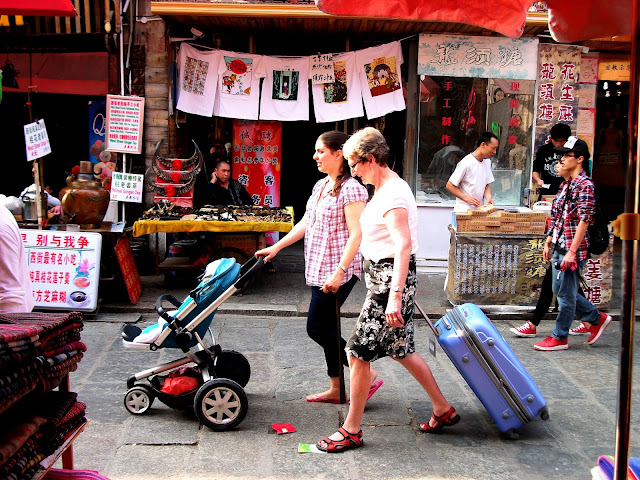We need to follow the law of nature as soon as possible so as not to leave too much regret in our life on the road.
Tuesday, April 24, 2012
Monday, April 23, 2012
熊斯颖《四》
She's enjoying my kisses:)
Wow,so sexy legs:)
Thank you ,sister!I like candy!
Three cute children
OMG,what were you doing?
Me&Siying Ruohao&Liji
Dancing&Singing
so high
Two big children,lol...
Sunday, April 22, 2012
Sunny day
Shopping&Lunch with my best friend ---Jiaxin Man
味千ラーメン
One needs to be nice to himself/herself!Because nobody knows what will happen tomorrow!
68RMB for us(two people)
Went to the Watsons for shopping
One needs to be nice to himself/herself!Because nobody knows what will happen tomorrow!
Thursday, April 19, 2012
Wednesday, April 18, 2012
Preparing for internship
Wellton International Hotel Dongguan or Lijiang Waterfall Hotel Guilin?Or any else?In any case,I hope i can pass the interview successfully and get this internship!Exams and intership!Busy,busy and busy...
Tuesday, April 17, 2012
Tess of the d'Urbervilles
Tess of the d'Urbervilles: A Pure Woman Faithfully Presented, also known as Tess of the d'Urbervilles: A Pure Woman, Tess of the d'Urbervilles or just Tess, is a novel by Thomas Hardy, first published in 1891. It initially appeared in a censored and serialised version, published by the British illustrated newspaper, The Graphic. Though now considered an important work of English literature, the book received mixed reviews when it first appeared, in part because it challenged the sexual mores of Hardy's day. The original manuscript is on display at the British Library,showing that it was originally titled "Daughter of the d'Urbervilles."
Thanks for our teacher--- Ken to give us to watch this movie in last 3 weeks.Part1,Part2 and Part3.Through the movie,we've known Tess who's a terrible woman at that time.For example,she lost baby and husband ,then she's into a new love and last she killed her husband by herself...As we know,she had no choice but to do that,including us,some people like Tess's situation----Fate!Everything is fate!
Beauties often draw down ruins;Beauties are often ill-fated!
Thanks for our teacher--- Ken to give us to watch this movie in last 3 weeks.Part1,Part2 and Part3.Through the movie,we've known Tess who's a terrible woman at that time.For example,she lost baby and husband ,then she's into a new love and last she killed her husband by herself...As we know,she had no choice but to do that,including us,some people like Tess's situation----Fate!Everything is fate!
Beauties often draw down ruins;Beauties are often ill-fated!
Tess really love him
Tess married with him just for his money.At last,she killed him by herself,a little crazy.
It’s unfair. Men are always easy to get forgive. Women are always easy to be hurt.Nowadays women’s situations have become much better. Some are because of the change of society and some are because of civilization.
Just let those poor painful women like TESS be just a memory.Monday, April 16, 2012
Thursday, April 12, 2012
Yesterday
Yesterday, all my troubles seemed so far away
Now it seems as though they're here to stay
Oh, I believe in yesterday.
Wednesday, April 11, 2012
Bless Indonesia
From: http://www.nytimes.com/2012/04/12/world/asia/indonesia-sets-new-tsunami-warning-as-aftershock-hits.html?src=tp&smid=fb-share
BANGKOK — A powerful 8.6-magnitude earthquake struck more than 200 miles off the coast of the Indonesian island of Sumatra on Wednesday, spreading panic among residents and reviving memories of the devastating 2004 earthquake and tsunami in the same area.
BANGKOK — A powerful 8.6-magnitude earthquake struck more than 200 miles off the coast of the Indonesian island of Sumatra on Wednesday, spreading panic among residents and reviving memories of the devastating 2004 earthquake and tsunami in the same area.
Government said there were no reports of casualties or significant damage from the initial earthquake, but several strong aftershocks were reported in the afternoon and early evening. The largest measured 8.2, the United States Geological Survey said.
The earthquake was felt in Bangladesh, India, Malaysia, Singapore and Thailand, news agencies reported, with coastal areas of southern Thailand and eastern India declaring tsunami alerts and Indonesia issuing a tsunami warning following the aftershocks.
Indonesia’s president, Susilo Bambang Yudhoyono, told reporters at a news conference in Jakarta that the earthquake had caused “a little bit of panic.”
In Banda Aceh, which was devastated by the earthquake and tsunami in 2004, buildings shook for several minutes, and people poured into the streets from their homes, said Rizal, a resident of the city reached by telephone.
“The only problem we had was people panicking,” he said.
The 2004 tsunami, caused by a giant 9.1-magnitude earthquake, killed 230,000 people in more than a dozen countries.
Wednesday’s earthquake was not as powerful, and seismologists said its horizontal motion made it less likely to trigger a large tsunami.
A scientist at the Tsunami Early Warning System of India said there was “no major tsunami threat” to the east coast of the country. Tamil Nadu and south Andhra Pradesh, states that sit on the Bay of Bengal, remain under alert for now. “We’re monitoring sea level gauges,” said the scientist, who declined to give her name.
On the Andaman and Nicobar islands, the closest Indian territory to the earthquake’s epicenter, officials and hotel managers said they felt the earth move at around 2:15 p.m., but said there was no sign of a tsunami or even big waves nearly two hours later.
Commander Bindu Prakash, an officer with the Indian Navy based on the islands, said there had been no noticeable rise in sea levels even past the estimated time that the tsunami was supposed to hit the islands. He said the official tsunami warning was still in effect as a precaution.
Deepika Mandal, an employee at the Fortune Resort Bay Island hotel in the capital of Port Blair said the sea was “absolutely calm.”
Vinnie Kalia, the owner of the Island Vinnie’s Tropical Beach Cabana, had his 23 guests evacuate the resort around 3:45 p.m. to a hill next to the resort. “We evacuated about half an hour ago, but the ocean is calm as anything, so we canceled the evacuation,” he said by telephone. “And now they’re all coming back in to the resort.”
“The coastal area has been vacated,” said Prabhakar Rao, the top official at the District Disaster Control Room at Andaman & Nicobar.
In Aceh, which sits on the northern tip of Sumatra, the earthquake knocked out electricity and tied up cellular phone service, according to Edo Iskandar, a 56-year-old driver who said he was drinking coffee at an outdoor restaurant when the earthquake struck in the midafternoon. “People start running out into the street,” he said. “All the people at the food stall, people from shops, houses, everybody was in the street panicking, running and looking for higher ground.”
The tsunami siren sounded, he said.
The initial quake struck at a depth of 14 miles with an epicenter 269 miles southwest of Banda Aceh, according to the United States Geological Survey. The strongest aftershock was measured at a depth of 10 miles.
Bruce Pressgrave, a geophysicist with the survey, said the first earthquake was believed to have come from a “strike-slip fault,” which would reduce the likelihood of a destructive tsunami. The wall of such faults moves horizontally with little vertical motion, he told a BBC news program.
“Since the motion is horizontal, it is not moving the water column, it is less likely to produce a destructive tsunami,” Mr. Pressgrave said.
Muktita Suhartono contributed reporting from Bangkok; Nikhila Gill, Sruthi Gottipati, Nida Najar from New Delhi; Kevin Drew from Hong Kong and J. David Goodman from New York.
The end of 2012?Bless Indonesia!
The end of 2012?Bless Indonesia!
Tuesday, April 10, 2012
Where?
-Next one?
-I don't know!That is different love,that is no way...
Hot Pot
Today ,my friend and i enjoyed Hot Pot(Jiji Hong,Liuzhou,Guangxi,China) for lunch...we're so excited.However, she originally thought to go shopping,but it's time to ready to return school by No.3 bus after we've for lunch,so we're a little rushed!!!
By the way,we will see RMS Titanic at the cinema in China on 10th,April! And hope it will get a high theatrical grosses!
Thursday, April 5, 2012
Yangshuo,Guilin
April 3nd,we started the last stop of our short tour in Guilin---Yangshuo!We rent the two bicycles and enjoyed the beautiful scenery along the way---"Shili Scenery Gallery View",including Ancient Totem ,Rock Climbing Base,Elephant out and a Horse in to the Cave,Butterfly Spring,Yangjiao Hill,Riverside Holiday Hotel,Gongong Bridge,Big Banyan Tree,Jianshan Temple,Assembly Dragon Cave and Moon Hill!
Then we bought a lot of ethnic costumes!so crazy!Next,we visited West Street and Lijiang.West Street---As the oldest street in Yangshuo,its has a history of more than 1400 years.Keeping the traditional style of Guibei dwellings,West Street is place where perfect blending is presented between profound Chinese culture and western culture.So,its is also acknowledged as the Global
Village,Foreigers's Street and English Corner.
So we became free informal models for some photographers.One of the person who's a foreigner said that could i take pictures for you...Yeah,so nice trip!
Then we bought a lot of ethnic costumes!so crazy!Next,we visited West Street and Lijiang.West Street---As the oldest street in Yangshuo,its has a history of more than 1400 years.Keeping the traditional style of Guibei dwellings,West Street is place where perfect blending is presented between profound Chinese culture and western culture.So,its is also acknowledged as the Global
Village,Foreigers's Street and English Corner.
So we became free informal models for some photographers.One of the person who's a foreigner said that could i take pictures for you...Yeah,so nice trip!
Subscribe to:
Posts (Atom)























































